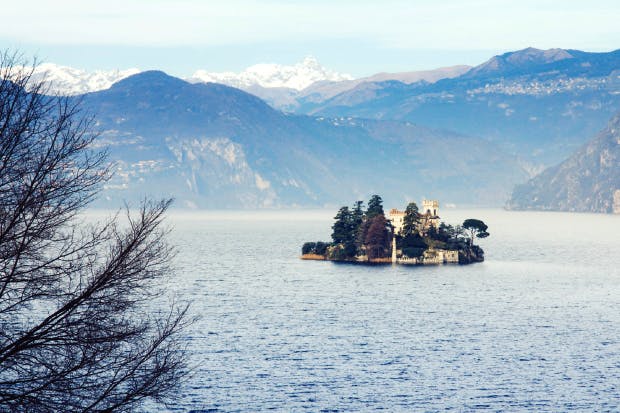If you’ve never heard of Lake Iseo, you’re not alone. Nestling shyly between chocolate-box Como and glamorous Garda, the smallest of Lombardy’s four major lakes has quietly resisted the limelight over the centuries. Fashionistas may frolic on photo shoots in Garda’s ritzy spas, while excursion boats patrol Como’s west bank in the hope of spotting George Clooney in his front garden. But pint-sized Iseo shelters beneath cascades of forest, her charms undisturbed by tourist hordes. Iseo’s waters shimmer benignly amid nothing more disruptive than birdsong, the splashing of traghetti boats and the occasional peal of church bells.
Inevitably, a few cognoscenti have rumbled Lake Iseo’s unique brand of magic over the years. ‘Dear child,’ wrote Lady Mary Wortley Montagu to her daughter in 1747, ‘I am now in a place the most beautifully romantic I ever saw in my life.’ (She duly bought a half-ruined palazzo in the waterfront town of Lovere, acquired a dairy and then set about introducing locals to what she called ‘the science of butter-making’.) Another fan was the novelist George Sand, who described the lake and its ambience in 1857 as ‘gentle and fresh, like one of Virgil’s Eclogues’. But other converts, especially in recent years, seem (happily) to have opted to keep their discovery to themselves.
Lovere is one of just three small towns on the shores of the lake, the others being Iseo itself, with its cheery array of pizzerias and gelaterias, and exquisite Sarnico — full of cobbled streets, stone gateways and iron balconies. Elsewhere around the lake, -dinkier settlements are linked like a daisy chain by an attractive coastal road — with even the tiniest of villages boasting an elaborate church, a flagged square and medieval alleyways. At sleepy Sale Marasino and neighbouring Sulzano, elegant mansions parade their finery in the evening lamplight like fashionable old ladies on a volta.
In the middle of Lake Iseo is the -gorgeous wooded island of Monte Isola. Fairytale pretty, it has a picture-perfect chapel at its apex (reachable by mule track through chestnut groves), and two lost-in-time waterfront fishing villages. Wander the back streets of Peschiera, and you’ll find a vaulted inner world, linked by crumbling porticos where women still sit patiently repairing fishing nets. It’s like stepping into an oil painting.
Ready for that romantic getaway? Lake Iseo is part of Brescia province, and the two closest airports — Brescia and Bergamo — are both less than an hour away from the lake. But you may need to move fast if you want to visit while it’s still relatively crowd-free. Bizarrely, yet rather wonderfully, Lake Iseo has caught the eye of the 80-year-old installation artist Christo (remember Berlin’s Reichstag, trussed up in what looked like tin foil in 1995?). His forthcoming ‘Floating Piers’ project (18 June–3 July) will suspend a two-mile walkway covered in gold cloth from Sulzano across to Monte Isola. Yes, it will almost certainly attract new visitors. But it should also be a magnificent spectacle. And after all, what lovelier place to walk on water?
Got something to add? Join the discussion and comment below.
Get 10 issues for just $10
Subscribe to The Spectator Australia today for the next 10 magazine issues, plus full online access, for just $10.














Comments
Don't miss out
Join the conversation with other Spectator Australia readers. Subscribe to leave a comment.
SUBSCRIBEAlready a subscriber? Log in